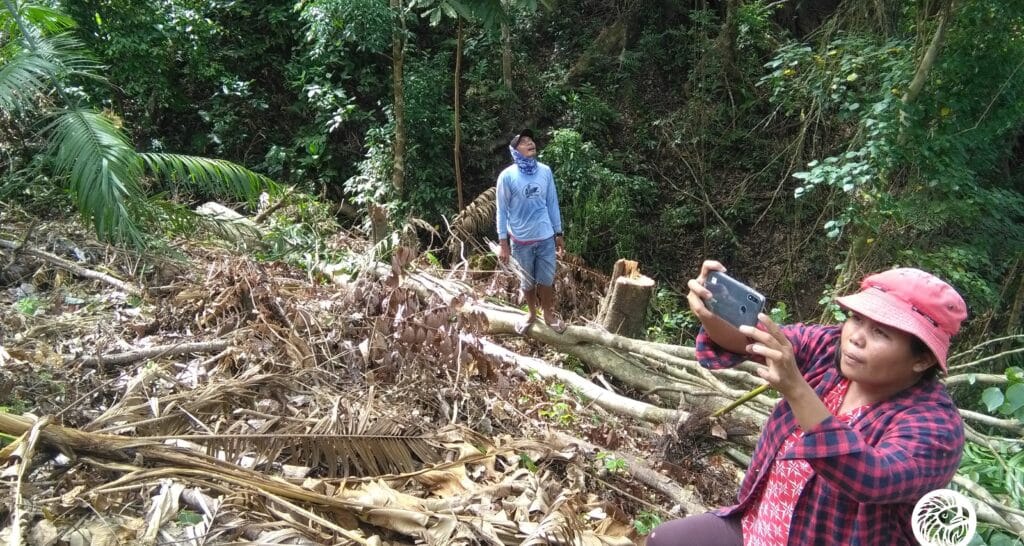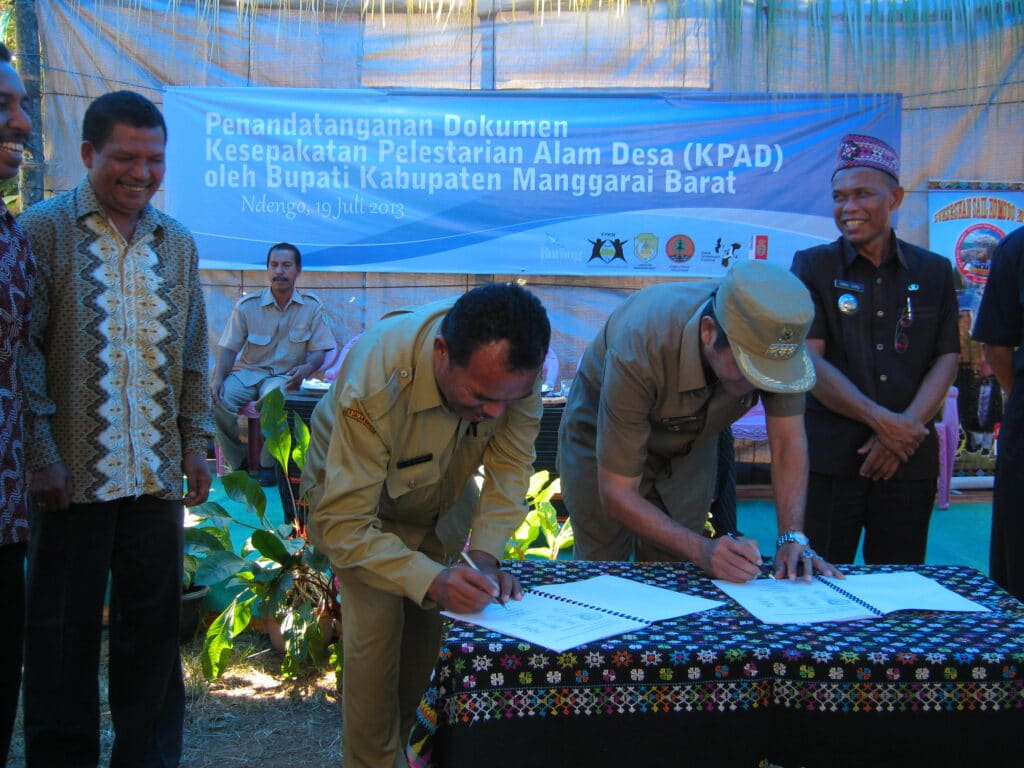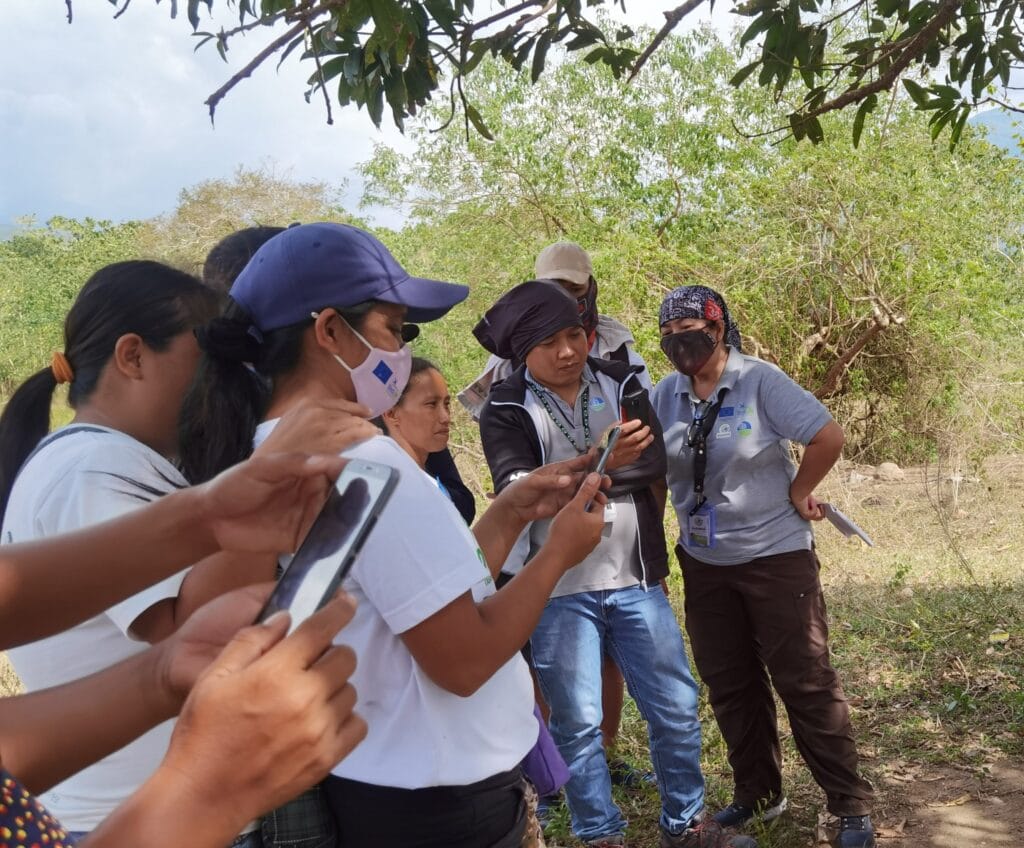Local people hold the key to protecting Southeast Asia’s forests

When it comes to protecting forests, community involvement is better than punishment. Thanks to two BirdLife projects, local people in Indonesia and the Philippines are reaping the benefits of managing and protecting their own natural resources.
On paper, a protected area is a wonderful thing: a patch of natural habitat put aside solely for nature, with rules that safeguard it from the threat of human development. But many of the ecosystems we want to protect cannot be completely shut off from people – they may play host to numerous communities, living in and alongside nature, who found their cultures, lifestyles and livelihoods on the resources nature provides. In these cases, there’s little use in creating rules if local people don’t understand why they were put in place or agree on the importance of following them.
That’s why two projects in Southeast Asia are making sure ordinary residents have every opportunity to get involved in the governing and protection of their local rainforests – both for the benefit of the planet, and to improve their own quality of life.
Indonesia: managing their own resources
Indonesia is an incredibly species-rich country, hosting an astonishing 1812 bird species, of which 179 are globally threatened. Unfortunately, it is also losing its nature at a startling rate, with vast swathes of land deforested or converted to residential areas, and the remaining wildlife threatened by poaching, forest fires and the illegal wildlife trade. Sadly, much of this destruction is driven by poverty – in 2021, a tenth of the population was found to be impoverished; as a result, quick sources of income are prioritised over consideration of the long term. Conservation is indeed a development issue too.
One area of particular importance is the Mbeliling landscape on the island of Flores: a highly biodiverse ecosystem that supports dense tropical forest alongside 36 villages, totalling about 40,000 people. To protect this landscape, Burung Indonesia (BirdLife Partner) helped local communities to set up Village Resource Management Agreements, whereby residents work with conservationists to pinpoint threats to wildlife and livelihoods and agree upon solutions.
The agreements are recognised by government policy makers and are overseen by a committee of local people who ensure they are properly carried out. Initially working through Local Conservation Groups in the area, these agreements have enabled Burung Indonesia to reach out to a far wider section of society and engage them in advocacy, training, conservation and economic development.
by Jessica Law
Above: Local forest guardians use the KaPatrol mobile phone app to report an area of damaged rainforest near Mount Siburan in the Philippines. Photo © Haribon Foundation

“To engage communities in nature conservation, there are two necessary options: increased awareness and enforcement of regulations, or community agreement on nature management. Village Resource Management Agreements are an appropriate tool to ensure their participation,” says Bone Haryanto, chair of Mbeliling Community Forum.
The effects of these agreements are already being felt. For one, local people now have a much better understanding of the concept of ecosystem services: the benefits that a healthy natural environment can provide them, such as water filtration, climate regulation, and soil fertility. As a result of this, 22 farmers now use eco-friendly soil and water conservation techniques on their land, and local communities have set up tree nurseries to reforest barren areas.
The Village Resource Management Agreements have also improved livelihoods by providing more eco-friendly sources of income, for example by setting up sustainable timber certification. Farmers who meet the certification standards can sell their timber for higher prices, making them more likely to follow sustainable forestry rules. To facilitate this, forestry companies have installed timber processing machines, proper protective equipment and official training for workers, making jobs safer as well as better for the environment.
Philippines: a mobile app with a difference
In the Philippines, forests are disappearing at an alarming rate. In the last 100 years, tree cover on the archipelago has dropped from 70% to less than 24%, making it one of the fastest-shrinking tropical forests in the world. This is particularly concerning given that more than half of the nation’s species are found nowhere else on earth.
Over the past 12 years, the Haribon Foundation (BirdLife in the Philippines) has been working hard to get protection for the highland forests of Mounts Irid-Angilo and Binuang in Luzon, Mount Siburan in Mindoro, and Mount Hilong-hilong in Mindanao. Although there now are policies in place to safeguard these habitats, monitoring and reporting the conditions of the forest is a challenge due to limited resources and political will.

But just because there aren’t enough official wardens, doesn’t mean there aren’t people interested in upholding the protection of their forests. In 2021, the Haribon Foundation launched the KaPatrol mobile phone app as part of the Citizen’s Action for Monitoring Ecosystems tool, enabling ordinary citizens to report any threats to natural ecosystems. The Haribon team met up with a wide range of groups who might be interested in using the app, ranging from indigenous peoples and local communities to academia, the church, government agencies, youth groups and the forest protection volunteer groups known as bantay gubat or ‘forest guardians’.
The team offered training in environmental science and conservation practice, as well as technical lessons on how to use the app, including mathematics and literacy – valuable skills that can be applied to other areas of life. Today, the app is already making the communication between local volunteers and wildlife authorities far smoother.
“The bantay gubat are invaluable partners in monitoring and reporting forest activities. Their speedy reports… ensure that there is an immediate response. They are also influential within the community because of the trainings they went through in forest conservation,” says Joel Astoveza, bantay gubat member for Mounts Irid-Angilo and Binuang.
The success of these projects is further proof that if we want to protect nature in the long term, we need to involve everyone.
These articles are part of BirdLife’s Asia-Pacific Forest Governance Project. Read the full case studies here:
Indonesia: Participation of Community in Sustainable Landscape Management in Mbeliling, Flores
Philippines: Citizen’s Action for Monitoring Ecosystems using a mobile app
“The bantay gubat (forest guardians) are invaluable partners in monitoring and reporting forest activities. Their speedy reports ensure that there is an immediate response.”Joel Astoveza, bantay gubat member, Mount Irid-Angilo and Mount Binuang.
More about the project
Title: Strengthening non-state actor involvement in forest governance in Indonesia, Malaysia, the Philippines, and Papua New Guinea
Lead Partner: BirdLife International
National Partners: Burung Indonesia (BirdLife Indonesia); Malaysian Nature Society (BirdLife Malaysia); Haribon Foundation (BirdLife in the Philippines); Tenkile Conservation Alliance (Papua New Guinea).
Training and Technical Partners: University of Papua New Guinea; Centre for International Development & Training
Funded by: European Union
Stay up to date
Sign up to receive the latest bird conservation news. You’ll also receive updates about our projects, science and other ways to get involved including fundraising.
Thank you for your support, we are committed to protecting your personal information and privacy. For more information on how we use your data, please see our Privacy Policy. You can unsubscribe from emails at any time by using the link in the footer of any email from us.

